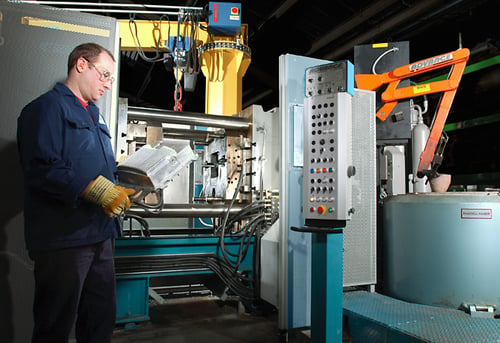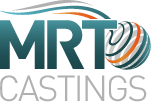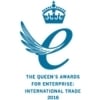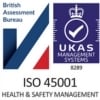Why is die casting chosen over CNC machining? Quite simply, it comes down to cost and speed.
If you are machining a complex geometry from a solid billet of aluminium then you have to remove a lot of material. That takes time – and it wastes a lot of metal.
rEDUCE YOUR MANUFACTURING COSTSDie casting is a near-net-shape process. So if you are casting rather than machining, then you use only use the material needed.
The process is fast and repeatable. Any post-casting machining will be only to add in tightly toleranced features or other finishing details. This will take a fraction of the time of machining a billet from solid.
The result? Lower unit cost. Much lower.

Save Time – Benefit From Faster Production Cycles
There are other positive benefits too. The faster cycle time significantly reduces the lead time for large batch production: a vital consideration as your clients put you under ever increasing pressure.
Casting can be used to produce complex shapes very quickly – far quicker than it would take to machine them. And when they come out of the die, very little CNC machining is required.
In some cases, inserts of other metals can be die cast in place. This further reduces manufacturing times.
Furthermore, die castings are monolithic so you can cast one large complex part very quickly instead of having to machine a series of components which then have to be assembled.
And by eliminating all those assembly joins, you are eliminating points of potential stress or weakness.
Precision Die Casting For Critical Components
The modern die casting process is controlled, repeatable and consistent so it has great quality benefits.
Even the most demanding industries – such as medical devices, aerospace and precision instrumentation – now trust die casting to produce critical components.
Our castings can be found in life-support machines, motion capture equipment, armoured fighting vehicles and airline interiors.
Specify Die Casting To Reduce Product Weight
With an ever growing trend in all industries to lightweight products, casting is even more relevant today.
Lightening a machined component involves the cost of additional machining to remove material by creating pockets and recesses in heavy sections.
But the same design feature on a casting usually removes cost as there is less material consumed – the geometry of the lightening features is created within the standard casting cycle.
It’s a win-win.
When To Specify CNC Machining
There is still a valuable role for machining for low volume production. That is because the initial outlay on die casting tooling can be expensive – so the unit cost savings don’t justify that investment until you get up to reasonable volumes.
But with advances in tooling manufacturing, that breakeven threshold is coming down all the time.
So if you are designing a new component and you are not sure whether to specify casting or CNC machining, get in touch with MRT’s technical team for some no-strings advice.
Maximise Your Return On Investment – Contact MRT
Are you currently sourcing machined components? Think that your volumes may justify investing in die casting tooling? Want to know how quickly your investment in die casting would start to save you money?
Contact us now – we would be happy to provide you a quotation.
Award-winning MRT Castings – World-Class Casting Specialist
MRT Castings has 70 years of experience in gravity and pressure die casting working in the aerospace, defence, energy, health, infrastructure and media industries.
As the recipient of the Queen’s Award for Enterprise: International Trade 2016, we are ideally suited to support clients around the world with projects requiring highly technical cast components.









